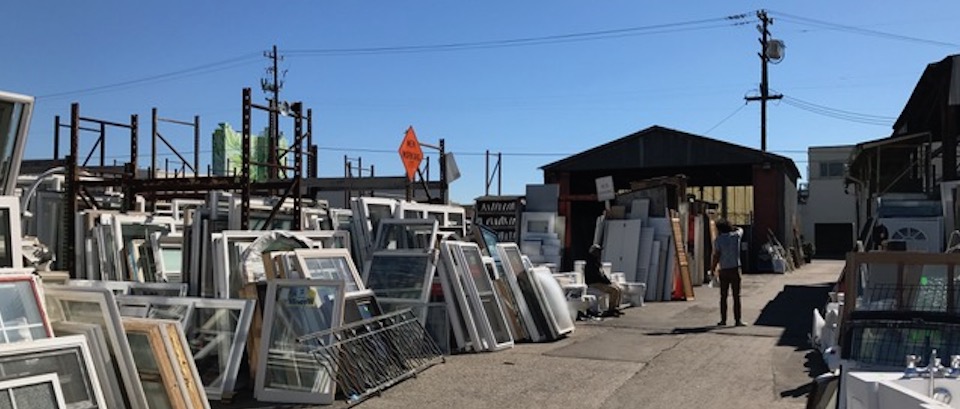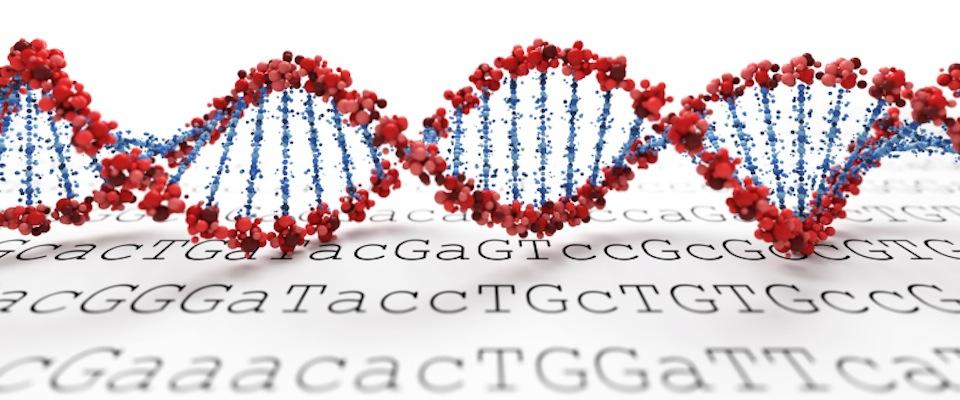Enter any grocery store franchise and prepare to be worked. It’s almost Halloween so you’ll see pumpkins, candy, straw, and speckled corn garnishing produce bins overflowing with honeycombed stacks of shiny, plump fruit. You’ll smell flowers, fresh bread, and deli meats. If you came at the right time you might hear a faint thunderstorm in the produce section and see soft mist falling on dewy greens.
“Have you tried Advanced Listerine?” A voice might chirp from the ceiling.
Enter through the plastic curtains of Urban Ore: Ecopark, and you might wonder where to begin. In an age when products all but seem to leap at you, you might, like me, even feel a little lost. In the dim lighting and the garage musk of things-long-in-storage you will find a different breed of product: the unwanted, the discarded, the lost, the broken, and the heavily used.
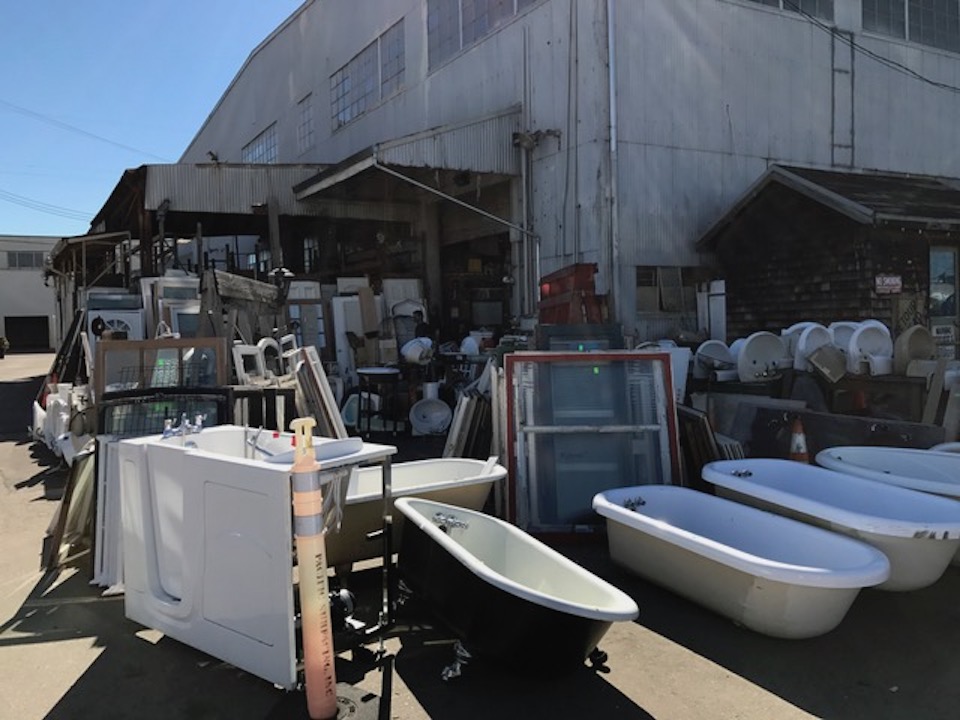
The brainchild of husband-and-wife team Dr. Dan Knapp and Mary Lou Van Deventer, Urban Ore is the city’s eternal, anonymous garage sale, a catcher in the sty whose 66,000-sq.-foot, multi-million-dollar operation stakes its livelihood on one man’s trash being another’s treasure.
For Cal students who eschew the particle board of Ikea, Urban Ore’s been a cheaper and more durable source of furniture for generations. For mechanics, plumbers, and construction workers, it’s an alternative to Home Depot. For the hip, alternative young, it’s a weekend haunt. For artists, a palette.
“It sort of has the feel of a massive yard sale,” says Gordon Garrett, who goes often to Urban Ore with his girlfriend, Sabrine Claremont (both Class of ’15). “It’s got oddities and knickknacks that you wouldn’t find anywhere else—like, from say, Target.”
“But there is life after Urban Ore. Urban Ore might thrive for a 100 years. But everything has its time. Us, Urban Ore. Everything goes.”
For all its niche eccentricities and anti-corporatism, the 34-year-old “eco-park” is a major contributor in helping the city realize its recycling goals. Today, UO claims to salvage two to six tons from the landfills per day, which accounts for about 15 percent of its total intake.
Absent are the labors of very serious consultants and insidious psychology, where mascots of sugary cereal brands are positioned to make eye contact with children and dairy’s always in the back. Absent is the curated, corporate-approved musical content of franchises. In the half-dozen times I’ve visited Urban Ore, I’ve recognized Little Dragon’s Ritual Union, Danny Brown’s Atrocity Exhibition, and a pan flute cover of “Sound of Silence”—the last of which, most focus groups would agree, wouldn’t exactly put them in a “shopping mood.”
Along its mezzanine you’ll see life-size cutouts of Obama, The Rock, Geordi La Forge, the Simpsons, a poster of the film Thor: The Dark World, and hanging from the rafters you’ll see a large Oakland A’s pendant, the lower body of a mannequin, and a wall-sized black-and-white poster of Earthrise, the iconic photograph of Earth taken from the moon during the Apollo Eight mission.
Its inventory? Windows, doors, bathtubs, toilets, hockey sticks, power drills, soccer cleats, external frame hiking packs, bathtubs, percolators, Shake weights, mailboxes, vacuum cleaners, leather saddles, Clinton and Gore election pins, DVDs and VHSs, Windows 95 computer games, a photo album of a Japanese family spanning decades, records, books, magazines, clothing, giant papier mâché pigs and dragons, scores of plastic ducks, and anonymous paintings. What have you.
You might call Urban Ore a brick-and-mortar Craigslist, whose anachronistic, Web 1.0 site has been ad-free and its search engine rudimentary since its beginnings in 1996. It’s a warehouse-size time capsule, an unlabeled, ever-morphing Bay Area museum touting wares from up to a century prior to the current date.
“There’s rarely anything famous or historical in here. It’s an everyman’s museum, as well as a museum of consumerism,” employee Atomn Jenkins said. He’s been with Urban Ore for six months and works in the store’s Arts & Media department. One of his side projects is a vaporwave jungle of fake palm trees above the electronics section.
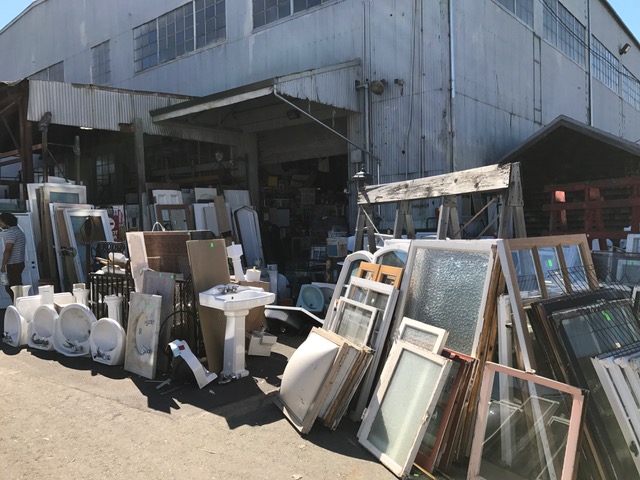
“One of the things in Urban Ore I find kind of moving is the photos. It’s crazy that every day I’m looking at the most intimate, personal moments in all these families’ lives.” he said.
Priscilla Cummings, store and facilities manager of 13 years, spoke of a 10-foot-long, pewter mermaid that took several people to lift and sold for $8,000. She also spoke of a garnet and diamond bumblebee Urban Ore salvagers found within a plain cardboard box and several watercolor sketches by the Spanish surrealist Miró, the worth of which was noticed by the quality of their frames, and one of which currently hangs in Van Deventer’s office.
But the salvage yard’s most valuable item was found peeking out of a black trash bag at the landfill: letters of correspondence from 1917 regarding the first NAACP chapter west of Mississippi, which were eventually sold to the Bancroft Library for $10,000.
***
The first question I asked Dan Knapp and Mary Lou Van Deventer, the couple behind Urban Ore, was how they met.
What followed was roughly 30 years of Knapp’s life, involving details about getting a Ph.D. and a professorship in Illinois, a fascination with Asian studies, a first wife who died of cancer, his beginnings in salvage in the Midwest, and going first to Eugene and then Berkeley, all of which took place before he met Van Deventer.
Urban Ore emerged in 1982 from the bankruptcy of the nonprofit Bay Cities Resource Recovery Depot which salvaged from the city landfill, now Cesar Chavez Park.
Meanwhile, Van Deventer was back in Michigan managing one of the pizzerias of her first husband, when she had a sort of big-blue-dot revelation.
“I had a vision. Imagining the Earth from a distance … you know, you realize it’s the only one we have—so far as we know—and we have to take care of it. It’s urgent. It’s not a manufactured urgency. It’s a planetary deadline.”
She moved to the Bay Area, working for various environmental nonprofits. It was at one of them—The Office of Appropriate Technology—where she was project manager, that she met Knapp, who was hired to write a white paper.
Eventually she joined Knapp at Urban Ore as operations manager.
“From there our histories converged.”
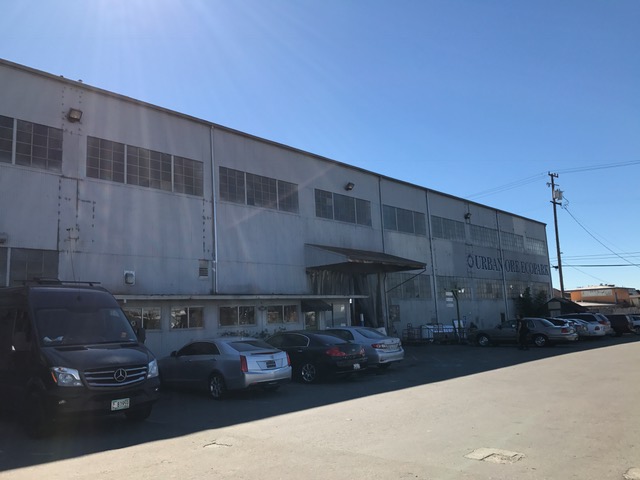
Their first date was on December 12, 1982, a city council meeting for a proposed incinerator at which Knapp stood up in protest. With the slogan “Give recycling a chance!” and the dissemination of Knapp’s 80-page polemic against the mass-burn incinerator, he and Van Deventer led a citizen’s initiative to defeat it and five others.
They continue their activism today. Van Deventer spent the night before our interview writing a 10-page argument against CalRecycle’s proposal of adopting EPR (extended producer responsibility) in order to meet the statewide goal of reducing resources sent to landfills by 75 percent.
Part-time Urban Ore contractor Max Wechsler, who worked as a salvager at the facility for six months in 2011 and who recently graduated with a master’s in environmental science and business from USF, has plans to collaborate with UC Berkeley to pick up and store the furniture and goods of students who move out in the summer and return in the fall.
Similar programs like PLAN (Post-Landfill Action Network), which operates in over 40 schools around the country, function as an alternative to Ikea, whose model of manufacturing is to produce cheap, disposable furniture, which makes it a major consumer of lumber.
Van Deventer envisions businesses and workshops that are synergistic with Urban Ore occupying the mezzanine of the warehouse. UO is also in development to become a co-op and to incubate other zero-waste eco-parks under its brand.
“We’re likely to die,” Van Deventer said. “The older you get the more often you do. But there is life after Urban Ore. Urban Ore might thrive for a 100 years. But everything has its time. Us, Urban Ore. Everything goes.”
It was 8:30 p.m., five hours later, when I finished interviewing Knapp and Van Deventer. My phone, which had been recording our conversation, had been dead for an hour. The store had closed at 7, and we were the only ones left in the warehouse.
“So does that answer the question of how we met?” Knapp smiled.
I looked at my notes and saw things like “first Earth day, Eugene → remarkable, sucker punch, David Brauer → genius, the dichotomy of sociologists as either grand theorists or abstracted empiricists, six-year old daughter, breast cancer, ‘scared to death,’” and: “‘I sat behind her on the bus because I didn’t think she wanted to talk to me. But then she sat next to me and we talked the whole way back to Berkeley.’”
“Yes.”











